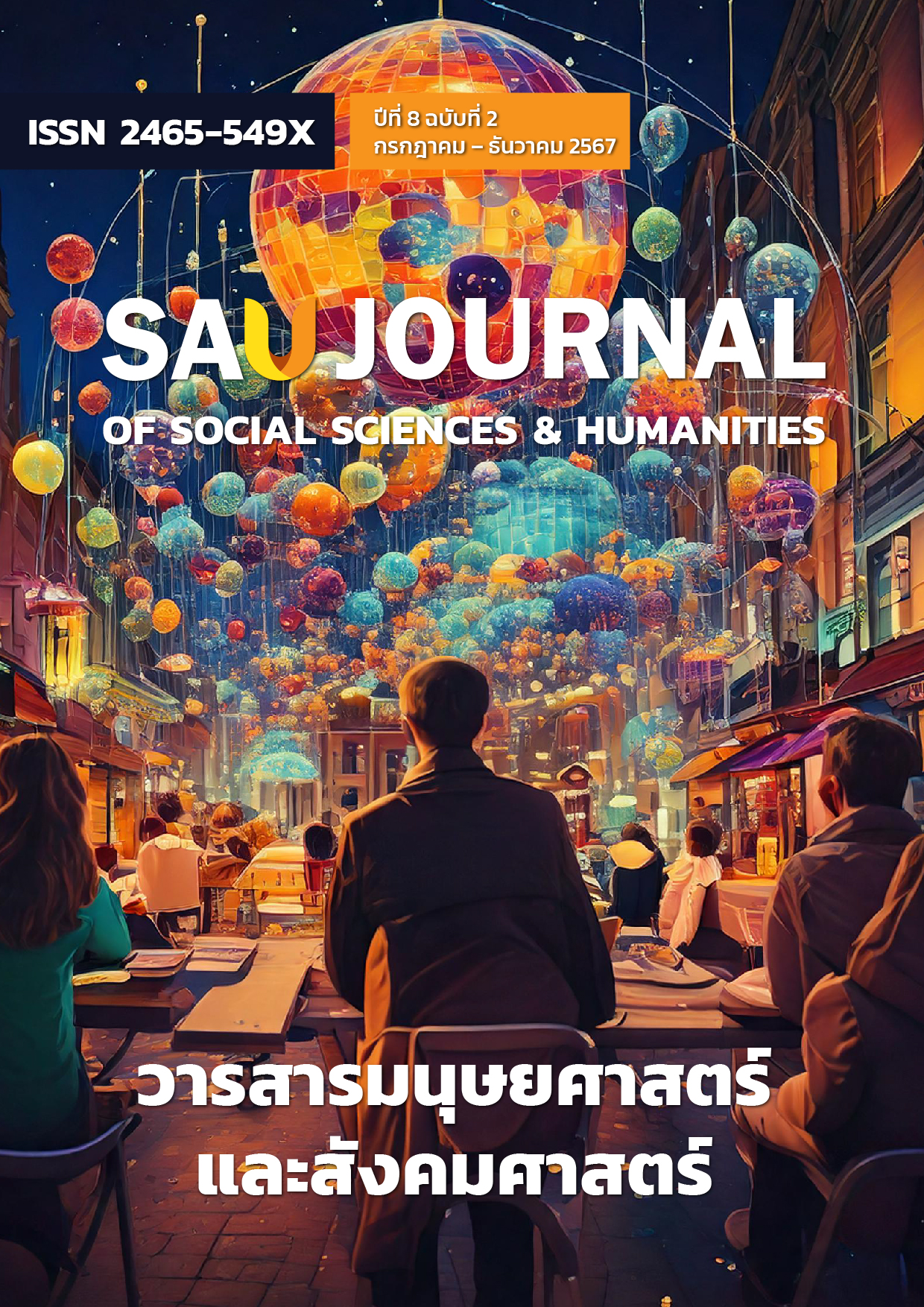Factors Affecting Teaching Quality: Students' Perception, Xi'an Kedagaoxin University, Xi'an City, China
คำสำคัญ:
teaching quality, motivation, teaching methods, teaching environment, learning resourcesบทคัดย่อ
This research aimed to study factors affecting teaching quality: students' perception, Xi'an Kedagaoxin University, Xi'an, China. The study was quantitative research by using a questionnaire as the instrument for collecting data. The sample consists of 200 students from Xi'an Kedagaoxin University, selected using simple random and stratified sampling. Data were analyzed by descriptive statistics in the forms of frequency distribution, percentage, and standard deviation. Moreover, to verify the relationship between independent variables and dependent variables Pearson's correlation analysis, and the hypothesis testing by multiple regression analysis.
The research results found that, the relationship between Motivation, Teaching Methods, Teaching Environment, and Learning Resources impact teaching quality at Xi’an Kedagaoxin University with statistical significance at the 0.05 level. The recommendations from the research are as follows: in terms of motivation, positive strategies and policies, and rewards should be used to increase motivation; in terms of teaching methods, a variety of teaching strategies should be used to stimulate student interest and participation; in terms of teaching environment, classroom infrastructure facilities and the psychological environment should be improved; and in terms of learning resources, learning media and various digital media should be improved.
References
Arifin, A., Suryaningsih, S. S., & Arifudin, O. (2024). The Relationship Between Classroom Environment, Teacher Professional Development, and Student Academic Performance in Secondary Education. International Education Trend Issues, 2(2), 151-159.
Boadu, S. K., Arthur, Y. D., & Bonyah, E. (2023). Mediation and moderation effects of motivation and teaching quality on the relationship between peer tutoring and mathematics achievement. Journal of Mathematics and Science Teacher, 3(2).
Dahl, D. W., & Smimou, K. (2011). Does motivation matter? On the relationship between perceived quality of teaching and students' motivational orientations. Managerial Finance, 37(7), 582-609.
Fleming, R. S. (2024). Preparing for a Successful Faculty Career: Achieving Career Excellence as a Faculty Member. Springer Nature.
Fredricks, J. A., Blumenfeld, P. C., & Paris, A. H. (2004). School engagement: Potential of the concept, state of the evidence. Review of educational research, 74(1), 59-109.
Gao, Y., & Abidin, N. B. H. Z. (2023). Analysis of the Relationship Between Teaching Environment and Teaching Quality in Inner Mongolia Universities. Journal of Contemporary Educational Research, 7(12), 376-382.
Han, Z. (2021). A Fuzzy Logic and Multilevel Analysis‐Based Evaluation Algorithm for Digital Teaching Quality in Colleges and Universities. Scientific Programming, 2021(1), 7026531.
Hattie, J. (2008). Visible learning: A synthesis of over 800 meta-analyses relating to achievement. Routledge.
Helmke, A., Schneider, W., & Weinert, F. E. (1986). Quality of instruction and classroom learning outcomes: The German contribution to the IEA classroom environment study. Teaching and Teacher Education, 2(1), 1-18
Ikediashi, D., Moobela, C., Leitch, K., Dan-Jumbo, N., Dania, A., Akoh, S. R. R., & Esangbedo, P. (2023). Lecturer's pedagogical attributes and teaching quality for construction and engineering education in UK universities: mediating effect of research-informed teaching. Journal of Applied Research in Higher Education, 16(3), 875-890.
Jonassen, D., Spector, M. J., Driscoll, M., Merrill, M. D., van Merrienboer, J., & Driscoll, M. P. (2008). Handbook of research on educational communications and technology: a project of the association for educational communications and technology. Routledge.
Kowang, T. O., Yew, L. K., Yen, H. W., Hee, O. C., Fei, G. C., Rasli, A., & Long, C. S. (2022). Relationship between teaching quality factors and employability among Technology Management students. In J Eval & Res Educ ISSN, 2252(8822), 1155.
Linda, D. H. (1999). Teacher quality and student achievement: A review of state policy evidence. Retrieved September 25, 2006.
Lunkina, M. V., Gordeeva, T. O., Diryugina, E. G., & Pshenichnyuk, D. V. (2023). Teaching quality as a predictor of student engagement, well-being and performance. RUDN Journal of Psychology and Pedagogics, 20(3), 628-649.
Meng, S. (2023). Enhancing Teaching and Learning: Aligning Instructional Practices with Education Quality Standards. Research and Advances in Education, 2(7), 17-31.
Ministry of Education of the People's Republic of China. (2015). The "Double First-Class" initiative. Retrieved from http://www.moe.gov.cn
Murwanashyaka, P., Bikorimana, D., Berabose, V., Tuyishimire, L., Turatsinze, J. B., & Tuyizere, G. (2024). Teachers’ Extrinsic Motivation on Quality Education in Nyamasheke District, Rwanda. East African Journal of Education Studies, 7(1), 377-388.
Ofoghi, N., Sadeghi, A., & Babaei, M. (2024). Effects of Classroom Atmosphere on the Quality of Learning (QoL) for Students Learning.





